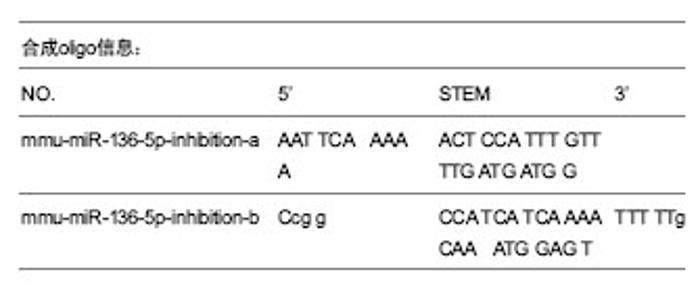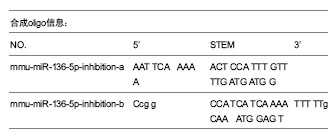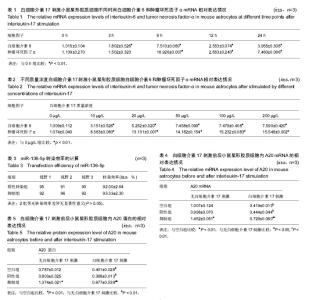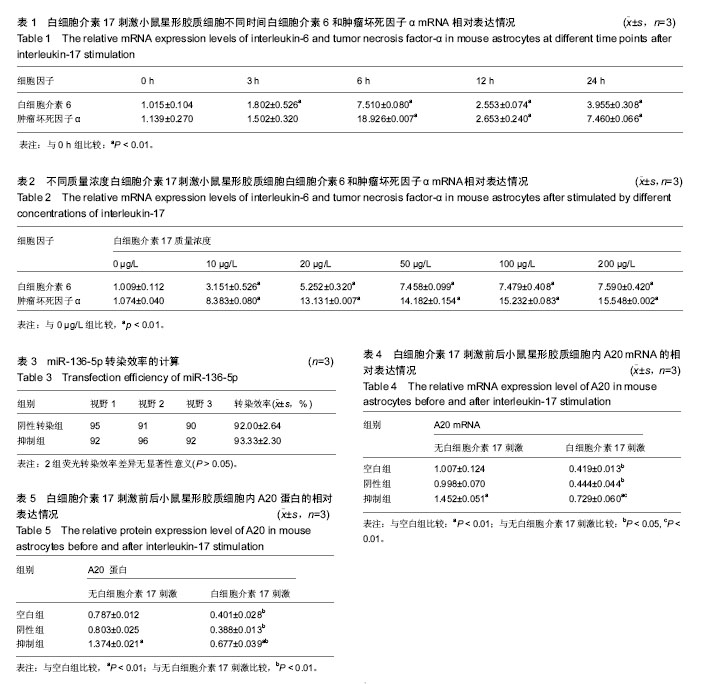| [1] 汪伟.神经元—星形胶质细胞相互调控在神经病理性痛及镇痛中的作用[D].第四军医大学,2011.[2] Rostami A, Ciric B.Role of Th17 cells in the pathogenesis of CNS inflammatory demyelination. J Neurol Sci.2013;333(1-2): 76-87.[3] Volterra A, Meldolesi J.Astrocytes, from brain glue to communication elements: the revolution continues.Nat Rev Neurosci.2005; 6(8):626-640.[4] Pierson E, Simmons SB, Castelli L,et al.Mechanisms regulating regional localization of inflammation during CNS autoimmunity.Immunol Rev.2012;248(1): 205-215.[5] 张志军.脊髓星形胶质细胞中CXCL1参与神经病理性疼痛调节的机制研究[D].苏州大学,2012.[6] Miyoshi K,Obata K,Kondo T,et al.Interleukin-18-mediated microglia/astrocyte interaction in the spinal cord enhances neuropathic pain processing after nerve injury.J Neurosci. 2008; 28(48): 12775-12787.[7] Ji RR, Kawasaki Y, Zhuang ZY, et al.Possible role of spinal astrocytes in maintaining chronic pain sensitization: review of current evidence with focus on bFGF/JNK pathway.Neuron Glia Biol.2006; 2(4):259-269.[8] 施沛青,朱书,钱友存.IL-17的信号传导及功能研究[J].中国细胞生物学学报, 2011,33(4): 345-357.[9] 钱丽丽,胡明慧,贾秀志,等. IL-17在急性神经炎症中的神经保护作用与机制[J].免疫学杂志, 2015,31(7): 553-556.[10] 王倩, 胡金伟, 马秀敏等. Th17细胞与自身免疫性疾病关系的研究进展[J].现代免疫学, 2015,35(6): 524-526+506.[11] Bettelli E, Korn T, Oukka M, et al. Induction and effector functions of T(H)17 cells.Nature.2008;453(7198): 1051-1057.[12] O'Connor W Jr, Kamanaka M, Booth CJ, et al.A protective function for interleukin 17A in T cell-mediated intestinal inflammation.Nat Immunol.2009;10(6): 603-609.[13] Wong CK, Ho CY, Ko FW, et al.Proinflammatory cytokines (IL-17, IL-6, IL-18 and IL-12) and Th cytokines (IFN-gamma, IL-4, IL-10 and IL-13) in patients with allergic asthma. Clin Exp Immunol.2001;125(2): 177-183.[14] Liu X, He F, Pang R, et al.Interleukin-17 (IL-17)-induced MicroRNA 873 (miR-873) Contributes to the Pathogenesis of Experimental Autoimmune Encephalomyelitis by Targeting A20 Ubiquitin-editing Enzyme. J Biol Chem. 2014;289(42): 28971-28986.[15] 夏梦,刘书逊. 树突状细胞中A20的表达参与机体免疫稳态的维持[J].中国肿瘤生物治疗杂志, 2013,20(1): 42.[16] Vereecke L,R Beyaert G. van Loo. The ubiquitin-editing enzyme A20 (TNFAIP3) is a central regulator of immunopathology.Trends Immunol.2009; 30(8):383-391.[17] Song XT, Evel-Kabler K, Shen L, et al.A20 is an antigen presentation attenuator, and its inhibition overcomes regulatory T cell-mediated suppression.Nat Med. 2008;14(3):258-265.[18] 陈建敏, 杨拯, 梁楠,等.脊髓损伤相关的microRNA研究进展[J].中国康复理论与实践, 2013,19(7):635-639.[19] Jee MK, Jung JS, Choi JI, et al.MicroRNA 486 is a potentially novel target for the treatment of spinal cord injury. Brain.2012; 135(Pt 4): 1237-1252.[20] Tang G. siRNA and miRNA: an insight into RISCs.Trends Biochem Sci. 2005;30(2): 106-114.[21] Ma X, Reynolds SL, Baker BJ,et al.IL-17 enhancement of the IL-6 signaling cascade in astrocytes. J Immunol.2010; 184(9): 4898-4906.[22] 曾俊. 柯萨奇病毒感染星形胶质细胞及细胞因子变化研究[D].汕头大学,2010.[23] Bak M, Silahtaroglu A, Møller M, et al.MicroRNA expression in the adult mouse central nervous system.RNA (New York, N.Y.).2008;14(3): 432-444.[24] Bartel DP.MicroRNAs: genomics, biogenesis, mechanism, and function.Cell. 2004; 116(2):281-297.[25] Pauley KM, Cha S, Chan EK. MicroRNA in autoimmunity and autoimmune diseases. (New York, N.Y.)J Autoimmun.2009; 32(3-4):189-194.[26] 黄江湖. MicroRNA-21在急性脊髓损伤中的作用及川芎嗪的抗凋亡作用机制研究[D].中南大学,2013.[27] 陈琨.小鼠脊髓损伤后microRNA-152对神经元突起再生作用和机制的研究[D].第四军医大学,2014.[28] 陈金国. microRNA-124a在大鼠损伤脊髓中的表达及与钙蛋白酶1的相关分析[D].福建医科大学,2013.[29] 程细高.miR-140-5P参与调控颈椎软骨终板退变[J].南昌大学学报:医学版, 2014,54(5):1-5.[30] 卫肖.miR-27b对大鼠H9C2心肌细胞中MCP-1表达的抑制作用[D].郑州大学,2014.[31] 吴兴净, 张永涛, 郭雄,等. miR-125a-3p和miR-17-5p在激素性股骨头坏死中的作用[J]. 西安交通大学学报:医学版, 2015, 36(2): 210-214.[32] Makeyev EV, Zhang J, Carrasco MA, et al. The MicroRNA miR-124 promotes neuronal differentiation by triggering brain-specific alternative pre-mRNA splicing.Mol Cell.2007; 27(3): 435-448.[33] 李扬秋.A20的免疫调节作用及其临床意义[J].中国实验血液学杂志, 2011,19(4):851-856.[34] 王静,倪秀雄.锌指蛋白A20的结构特点及其对树突状细胞成熟和凋亡的影响[J] .海峡药学, 2012,24(5):8-10.[35] Coornaert B, Baens M, Heyninck K,et al.T cell antigen receptor stimulation induces MALT1 paracaspase-mediated cleavage of the NF-kappaB inhibitor A20.Nat Immunol.2008; 9(3): 263-271. |



